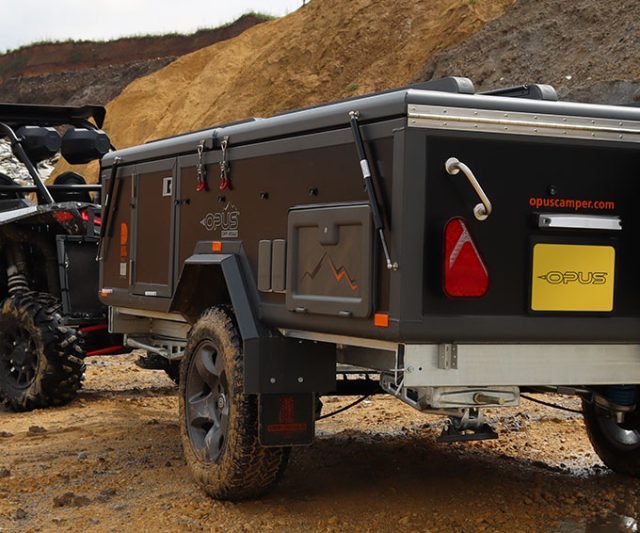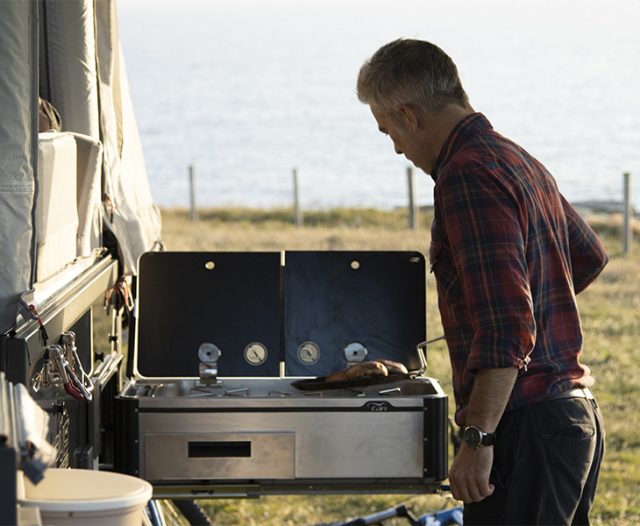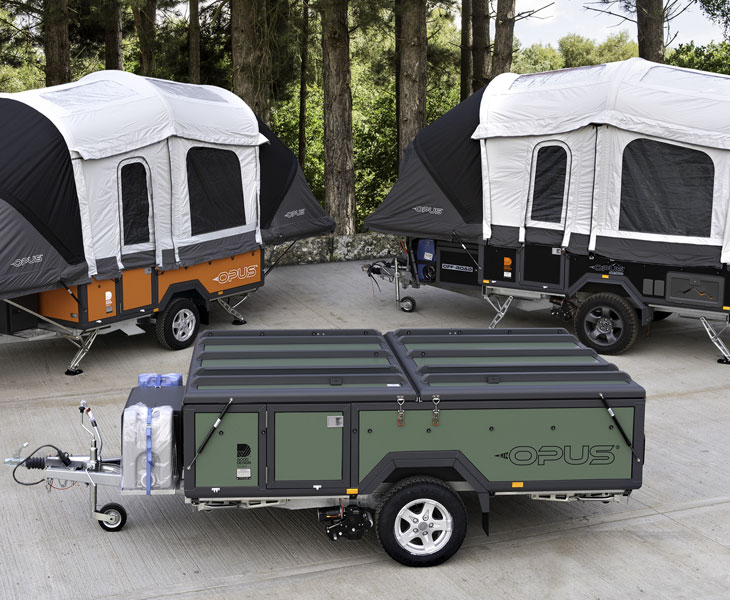For some travelers, living space is as important as mobility; one solution to this challenge is the combination of a compact, towable trailer with vast amounts of deployable, heavy-duty canvas. We recently wrote a feature of the Wedgetail Slide On Camper, and the Opus Off-Road Camper is a similar concept, with less practicality but a lot more convenience (as setup takes a fraction of the time).

The Opus OP-15 off-road camper is a compact and lightweight (2,000 pounds dry) trailer designed for off-road adventures. It features a durable aluminum frame, integrated independent suspension system, and all-terrain wheels and tires, allowing it to navigate relatively rough terrain. It also has a compact design that makes it easy to tow and maneuver with a flat, low profile and plenty of roof rack space for bikes, kayaks, and other gear that will need to be removed for the camper to be deployed. Using AIR tent technology, the trailer folds open, and a gigantic tent inflates at the press of a button.



Measuring 84 x 212 x 55 inches when closed and ready to roll, the trailer’s exterior features a nose cone storage box and space for fuel cans and extra outdoor gear, e.g., firewood. An optional three burner neatly slides out of the rear external storage access point and includes a drawer for storing your cooking utensils (yes, please). A spare wheel is mounted to the rear of the trailer. The exterior is not the star of this show, though; it’s the interior that has the wow factor.

The camper’s interior includes two queen-sized beds at either end, a kitchenette with a sink, two-burner stove, a microwave, a refrigerator, a heater, and space for a portable toilet. To the right of the airy kitchen, a demountable table is surrounded by a half-moon leatherette couch that seats four.

Additionally, the camper offers ample storage space and can be outfitted with various accessories, such as solar panels and a large, enclosed awning. It is designed to be fully self-sufficient, making it perfect for extended camping trips in remote areas.

We first came across this trailer (or a very similar product) at the North West Overland Rally back in 2016. At the time, the product appealed to us; we were traveling internationally with children, but the trailer needed to be more rugged for our type of travel. The new off-road biased Opus trailer, built in the United Kingdom, will no doubt be a huge hit in the USA and Australia, where the large roads and wide-open spaces allow for the deployment of such a trailer. While the towing of a trailer will no doubt limit the off-road capability and range of almost any vehicle, the Opus trailer seems an ideal base camp from which to explore an area. Combined with windows, skylights, LED lighting, and an internal height of nearly 2.5 meters, the cavernous interior looks, well, cavernous. Sitting on the beach in Baja, it is easy to imagine camping in the Opus, enjoying the large windows and freedom of ample, comfortable space. But then the wind howls down from the mountains, and I have to wonder how well the inflatable tent will cope during a week of endless gales.

We do not doubt that the Opus off-road trailer would be perfect for a family of four or even a space-loving couple. The limitation for overland travel would be that many countries (parts of Europe, Latin America, and Africa) do not offer the infrastructure necessary (or at least preferable) for a trailer of this type.
From $31,000
Our No Compromise Clause: We carefully screen all contributors to ensure they are independent and impartial. We never have and never will accept advertorial, and we do not allow advertising to influence our product or destination reviews.


